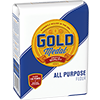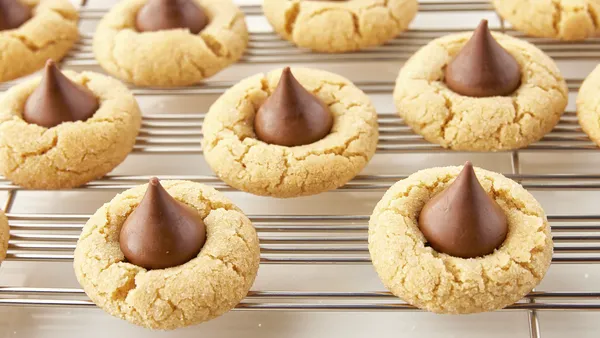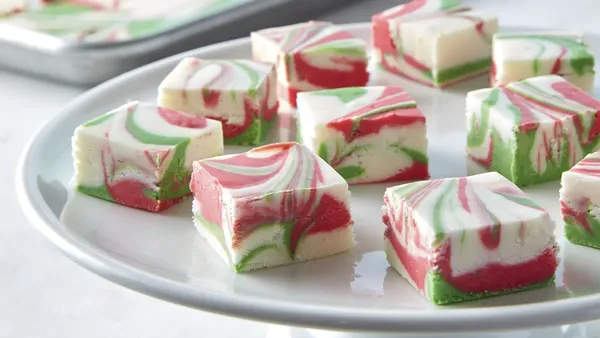The pie crust contains more than just delicious ingredients. It’s the gateway to a world of culinary memories that go back generations. So many classic dishes use a baked pie crust as their base. From fluffy, savory quiches to sweet, indulgent pies, it all starts with a great baked pie crust. For that perfectly flaky, made-from-scratch taste and texture, this baked pie crust recipe makes it easy to go from zero to delicious with minimal ingredients and just a few minutes of simple prep.
When you’ve got the time to put together a baked pie crust, it can make a huge difference in the finished product. And what better way to show off what you can do in the kitchen than with a homemade crust from scratch?
Whether you’re making something sweet, something savory, or somewhere in between, this baked pie crust recipe is designed to help you make it amazing with less time, less effort, and less hassle than you might expect! So let’s take a closer look at how to bake a pie crust!
How to Make Baked Pie Crust
The full steps on how to bake pie crust are down below, but here are a few things to watch out for.
After preheating your oven, thoroughly mix the flour and salt in a bowl, then add the shortening. You’ll want the dry ingredients to be fully combined before adding additional ingredients. Mix in the shortening with a pastry blender, or if you don’t have one, you can pull 2 table knives through the ingredients in opposite directions until it’s the size of small peas.
Now it’s time to sprinkle in cold water—one tablespoon at a time—until all the flour has some moisture, and the pastry almost pulls away from the side of the bowl.
Form the dough into a flattened ball, then wrap it in plastic wrap and let it sit in the fridge for about 45 minutes. This is where the dough will firm up, so that when it bakes, it gives you that perfectly flaky texture you’re after.
Then you just roll it out on a floured surface and bake it. Be sure to prick the bottom and side of the pastry with a fork to prevent bubbles from forming, then bake until it’s light brown—how long to bake a pie crust will vary by oven, but it’s usually about 8 to 10 minutes.
How to Roll out Pie Dough and Place in Dish
Lightly flour the rolling pin and the surface you’re rolling the pie crust on to prevent sticking, and add flour only as needed. Be sure to keep the dough level. It’s best to roll in several different directions, and then turn the dough in order to keep the circle a similar thickness.
How do you know when it’s the right size? You can check by flipping your pie plate upside-down on the dough circle. When your dough overlaps the pie plate by about 2 inches, you’ll know it’s ready.
Placing the crust into the pie plate can be tricky. But these tips will prove successful. To easily center the crust, first gently fold it into fourths. Then ease it into the pie plate, and carefully unfold, pressing firmly into the bottom and the sides. Trim the overhanging dough 1 inch from the rim of the pie plate, then wrap and press this excess dough around the rim.
How to Pre-Bake/Blind Bake Pie Crust
Blind baking a pie crust—also known as par-baking—is an essential step in making certain kinds of pies or quiches. If your pie filling is eggy or custard-like in texture, a blind baked pie crust recipe will partially firm up your pie crust so that the filling can cook properly. No-bake pies or pies that set quickly like pumpkin pie will also require a baked pie crust.
If you’re blind baking pie crust, just modify this recipe by reducing your oven heat to 425° and bake for about 15 minutes, or until the edges of the crust are golden and the bottom looks dry.
See More of Betty’s Easy Pie Recipes
This baked pie crust recipe is designed to work perfectly with any of the easy pie recipes from our kitchen. If you’re looking for inspiration, here are a few amazing ideas to try.
Tasty apple pie with a crisp, nutty topping? And it’s ready to bake in just a few simple steps? Yes, please! There’s a reason we call this Impossibly Easy French Apple Pie.
When you’re looking for an all-time favorite that always brings something delicious to the table, you can find it in this Decadent Pecan Pie.
The Classic Blueberry Pie is easier than you think, but still bursting with flavor. Unlike other fruit pies, blueberries don’t require fussy peeling or pitting, so prep is simple!
Just 10 minutes of prep time is all it takes to make this appropriately named Impossibly Easy Pumpkin PieImpossibly Easy Pumpkin Pie. Perfect for the holidays, or any time.
More About This Recipe
- Somewhere along the line, people got the idea that homemade pie crust is hard to make. But here’s the thing, this pie crust recipe is made with only four ingredients: flour, shortening, water and a sprinkle of salt. You can easily make it yourself, and it’s well worth the effort. Flaky, buttery and tender crust can be yours with minimum effort. Betty’s here to show you how it’s done — every detail you could ever need to know is here in this article about how to make pie crust — but honestly, you can skip the article and simply follow the recipe above. One quick note before you get started, pie crust is easier to make with a pastry blender — these inexpensive tools are available just about everywhere and usually cost less about $5 — so, if you don’t already own one, pick one up. Don’t have a pastry blender on hand? In a pinch you can use two knives or if you’ve got a food processor, you can use that too, but it’s certainly not necessary. The tips to making a perfect pie crust are as follows: Don’t overmix your pastry dough —you’ll want to blend the butter and flour into pea-sized crumbs. To get this gravel-like texture, use ice cold water. Next, you’ll chill your pastry mixture. When you’re ready to roll out the crust, flour your counter and your rolling pin to keep your pie crust from sticking or tearing. If you follow these simple tips, you’ll end up with a beautiful scratch-made pie crust, even on your first try! And once you master pie crust, you’ll want to explore all of Betty’s sweet pie recipes. One final note, there’s no shame in using a refrigerated crust, we rely on Pillsbury’s delicious pie crusts too, but we also think making pie crust is a skill everyone can and should master, which is why we’ve been teaching people to make their own for nearly a century!
Frequently Asked Questions
Baked Pie Crust
- Prep Time 25 min
- Total 1 hr 15 min
- Servings 8
- Ingredients 4
Ingredients
- 1 cup plus 1 tablespoon Gold Medal™ All Purpose Flour
- 1/2 teaspoon salt
- 1/3 cup shortening
- 3 to 5 tablespoons ice-cold water

Instructions
-
Step1Heat oven to 475°F. Mix flour and salt in medium bowl. Cut in shortening, using pastry blender (or pulling 2 table knives through ingredients in opposite directions), until particles are size of small peas. Sprinkle with cold water, 1 tablespoon at a time, tossing with fork until all flour is moistened and pastry almost leaves side of bowl (1 to 2 teaspoons more water can be added if necessary).
![]()
-
Step2Gather pastry into a ball. Shape into flattened round on lightly floured surface. Wrap flattened round of pastry in plastic wrap and refrigerate about 45 minutes or until dough is firm and cold, yet pliable. This allows the shortening to become slightly firm, which helps make the baked pastry more flaky. If refrigerated longer, let pastry soften slightly before rolling.
![]()
-
Step3Roll pastry, using floured rolling pin, into circle 2 inches larger than upside-down 9-inch glass pie plate. Fold pastry into fourths; place in pie plate. Unfold and ease into plate, pressing firmly against bottom and side. Trim overhanging edge of pastry 1 inch from rim of pie plate. Fold and roll pastry under, even with plate; flute as desired. Prick bottom and side of pastry thoroughly with fork.
![]()
-
Step4Bake 8 to 10 minutes or until light brown; cool on wire rack.










